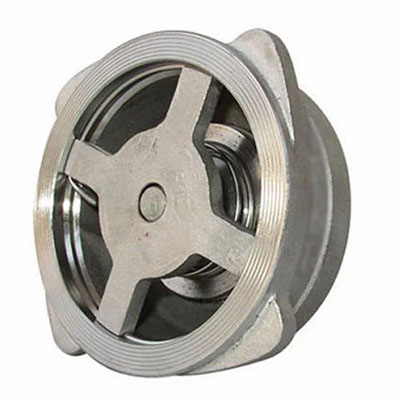Check valves
Steam check valves, also known as non-return valves or one-way valves, are devices used in steam systems to allow the flow of steam in one direction while preventing backflow or reverse flow of steam. They ensure that steam flows in the desired direction and prevent any unwanted reversal of steam flow, which can lead to inefficiencies, system damage, or safety hazards.
Here are the key features and functions of steam check valves:
1. One-Way Flow: Steam check valves are designed to allow steam flow in one direction while blocking or significantly reducing the flow in the opposite direction. This prevents backflow or reverse flow of steam, which can disrupt system operation or cause damage to equipment.
2. Valve Design: Steam check valves are typically designed with a hinged disc or a spring-loaded disc that allows steam flow in the forward direction when the pressure exceeds a certain threshold. When the pressure in the reverse direction exceeds the forward pressure, the disc closes, preventing backflow.
3. Pressure Drop: Steam check valves introduce a pressure drop in the system due to the resistance offered by the valve mechanism. It’s essential to consider this pressure drop when designing steam systems to ensure proper sizing and minimize the impact on overall system performance.
4. Types of Check Valves: There are various types of check valves used in steam systems, including:
a. Swing Check Valves: Swing check valves have a hinged disc that swings open to allow forward flow and closes to block reverse flow. They are commonly used in applications with higher flow rates.
b. Lift Check Valves: Lift check valves feature a disc that lifts vertically to allow forward flow and settles back onto the seat to prevent reverse flow. They are suitable for applications with lower flow rates.
c. Ball Check Valves: Ball check valves use a spherical or cylindrical-shaped ball that moves away from the seat to allow steam flow and returns to the seat to prevent reverse flow. They are commonly used in steam systems with high flow rates and can provide tight sealing.
5. Maintenance and Installation: Regular maintenance and inspection of steam check valves are important to ensure their proper functioning. Proper installation orientation, such as vertical or horizontal, and positioning in the steam system are also essential to optimize performance.




